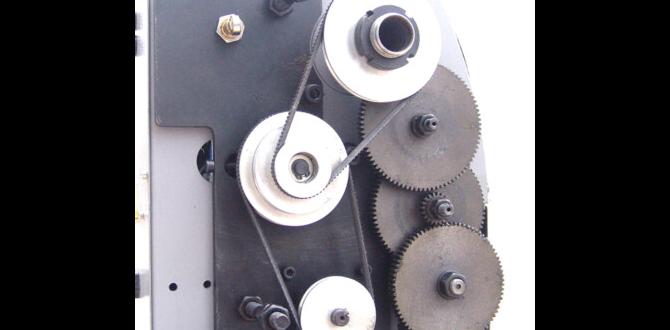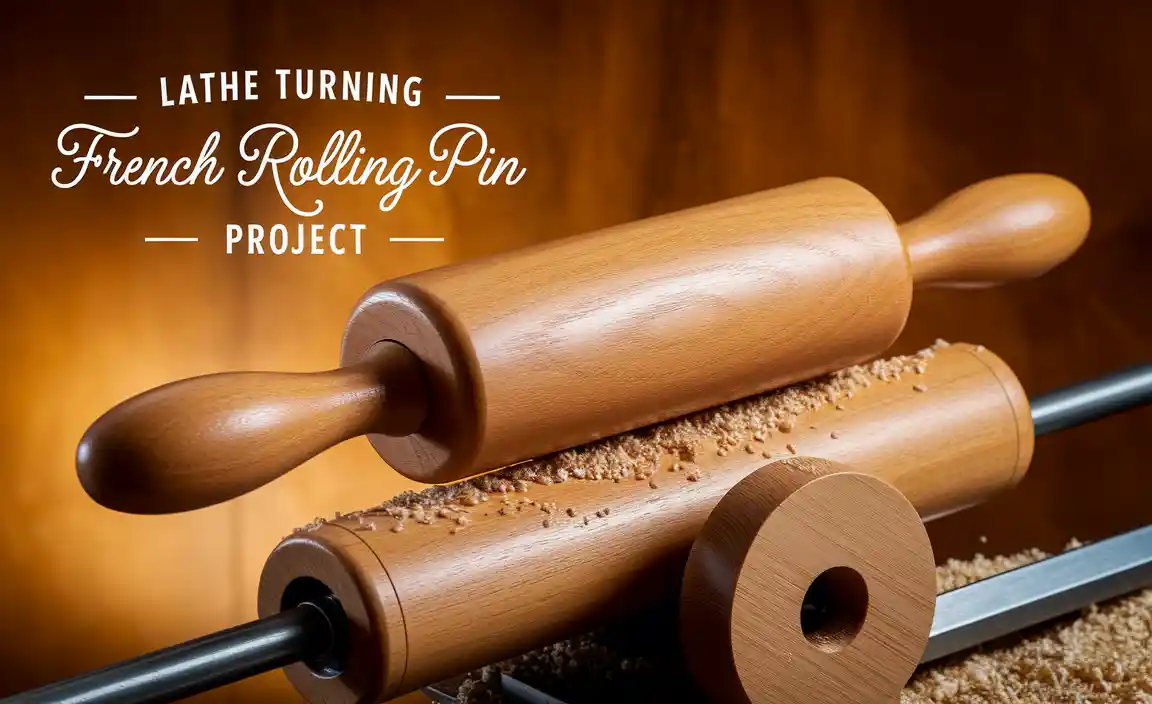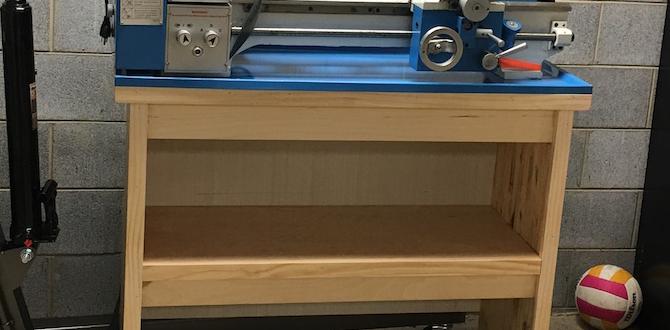Quick Summary:
Stop aluminum chatter with a 3/16″ carbide end mill! Use a tool with an optimal flute count, proper geometry like high helix angles, and a specialized coating. Control chip load, spindle speed, and depth of cut for smoother finishes. This guide provides simple steps to achieve chatter-free aluminum milling with your 3/16″ carbide end mill.
Tackling the Annoying Buzz: Your 3/16″ Carbide End Mill Chatter Solution for Aluminum
Ever tried to mill aluminum and ended up with a rough, noisy surface that looks like a washboard? That’s chatter, and it’s one of the most frustrating problems for beginner machinists. It’s that annoying vibration that travels from your cutting tool through your machine, leaving behind a terrible finish and potentially damaging your workpiece or your end mill. When you’re working with a precise tool like a 3/16″ carbide end mill and aiming for a smooth finish in aluminum, chatter can feel like a showstopper. But don’t worry! It’s a common issue with straightforward solutions.
In this guide, we’ll break down exactly why chatter happens and, more importantly, how to eliminate it. We’ll cover everything from choosing the right end mill to setting your machine up for success. By the end, you’ll have the knowledge and confidence to mill aluminum smoothly and efficiently. Let’s get your machine purring, not buzzing!
Understanding the Chatter Beast: What Causes It?
Chatter isn’t magic; it’s physics. It happens when the cutting forces from your end mill aren’t consistent. Imagine a spring: if you push and pull it unevenly, it vibrates. Your cutting tool can do the same thing. Several factors can cause this unevenness, especially when milling a soft, gummy material like aluminum.
Here are the main culprits:
Tool Deflection: The end mill can bend slightly as it cuts. If this bend isn’t controlled, it can lead to uneven cutting depths and vibrations.
Rigidity Issues: A loose workpiece, a worn spindle, or a flexible machine can all contribute to vibrations.
Incorrect Cutting Parameters: Too much material being removed at once, or the wrong balancing of spindle speed and feed rate, can overload the tool and initiate chatter.
Tool Geometry: The design of the end mill itself plays a huge role. Stiff, well-designed tools are less prone to chatter.
Chip Evacuation: If aluminum chips build up in the flutes, they can cause rubbing instead of cutting, leading to chatter.
Choosing Your Champion: The Right 3/16″ Carbide End Mill for Aluminum
Not all 3/16″ carbide end mills are created equal, especially when it comes to milling aluminum. For this soft, sometimes sticky, material, you need a tool specifically designed to handle it.
Here’s what to look for in your 3/16″ carbide end mill for aluminum:
Material: Solid carbide is the go-to for good reason. It’s much harder and more rigid than High-Speed Steel (HSS), meaning it can handle higher speeds and feeds, and it stays sharp longer.
Flute Count:
2 Flutes: Often the best choice for aluminum. The larger flute area provides excellent chip clearance, which is crucial for sticky materials. Fewer flutes also mean less engagement with the material at any given moment, reducing the chance of vibration.
3 Flutes: Can work but might be more prone to chip packing in softer aluminum alloys.
4+ Flutes: Generally not recommended for aluminum, as they tend to pack chips and create more drag.
Helix Angle:
High Helix Angle (30° – 45°): A steeper helix angle provides a sharper cutting edge and helps “slice” through the aluminum efficiently. This is excellent for reducing cutting forces and improving chip evacuation, both big wins against chatter.
Standard Helix (around 30°): A good all-around choice.
Zero/Low Helix: Not ideal for aluminum.
Coatings: While not always necessary for aluminum, some coatings can help.
Uncoated: Often perfectly fine for aluminum, especially if the carbide is polished.
ZrN (Zirconium Nitride): Can help reduce friction and sticking.
TiCN (Titanium Carbonitride): Better for steel but can offer some benefits.
DLC (Diamond-Like Carbon): Excellent for reducing friction and wear, making it a premium choice for aluminum.
End Mill Type:
Square End: Most common and versatile.
Ball Nose: For creating curves and fillets.
Corner Radius: A small radius (e.g., 0.010″ or 0.020″) on the corner can add strength and reduce stress concentration, sometimes helping with chatter.
Key Features for a 3/16″ Aluminum End Mill:
| Feature | Recommendation | Why it Matters for Aluminum & Chatter |
| :————- | :———————————————- | :———————————— |
| Material | Solid Carbide | Rigidity, heat resistance, sharpness |
| Flute Count | 2 or 3 | Chip clearance, reduced drag |
| Helix Angle | High Helix (30°-45°) | Efficient cutting, chip evacuation |
| Coating | Uncoated (polished) or ZrN/DLC | Reduced friction, anti-sticking |
| Geometry | Sharp cutting edges, polished flutes | Smooth cutting, chip flow |
| Shank | Standard 3/16″ (or 8mm if applicable) | Machine compatibility |
| Length | Standard or Extended (consider rigidity) | Access vs. deflection |
Dialing it In: Essential Machine Setup for Chatter-Free Milling
Having the perfect end mill is only half the battle. Your machine setup is critical for preventing chatter. Think of it as providing a stable stage for your tool to perform its best.
Here’s how to set up your machine properly:
1. Secure Your Workpiece:
Use appropriate workholding: Vices, clamps, or fixtures must hold the aluminum workpiece rigidly. Any movement here directly translates to chatter. Ensure the jaws of your vice are clean and provide good surface contact.
Minimize overhang: If possible, keep the portion of the workpiece being machined as close to the machine bed as you can.
Use an identifiable metal: We’re focusing on aluminum, but knowing the exact alloy (like 6061, 7075, etc.) helps with optimal parameters. For example, 7075 is harder and needs different settings than 6061.
2. Ensure Toolholder Rigidity:
Use a quality toolholder: A runout-free toolholder is essential. A worn or cheap one can introduce imbalance and vibration.
Proper collet or chuck: Make sure the collet or chuck you use to hold the end mill is clean and tight. The shank of the end mill should be held as deeply as possible without hitting the bottom of the collet.
Minimize tool extension: The less your end mill sticks out from the toolholder, the more rigid the setup. Try to keep the cutting portion of the end mill as close to the workpiece as possible without interfering.
3. Check Machine Condition:
Spindle Taper: Ensure your machine’s spindle taper is clean and free of debris. A dirty taper can lead to runout.
Bearings: While harder for beginners to fix, excessively worn spindle bearings can be a major source of vibration. If you hear grinding or feel excessive play, it’s time for maintenance.
Axis Motion: Check for any binding or excessive play in your machine’s X, Y, and Z axes. Smooth, consistent movement is key.
Mastering the Cut: Setting Speeds and Feeds for Aluminum
This is where the magic happens! Finding the right balance of spindle speed and feed rate is crucial for smooth aluminum milling and preventing chatter. These values are not fixed; they depend on your specific end mill, machine, and material. However, we can start with some excellent general guidelines for a 3/16″ carbide end mill in aluminum.
Here’s a breakdown of what’s involved:
Spindle Speed (RPM): This is how fast the end mill spins.
Feed Rate (IPM or mm/min): This is how fast you move the tool through the material.
Chip Load (or Chip Thickness): This is the thickness of the material each cutting edge of the end mill removes per revolution. It’s intrinsically linked to feed rate and RPM.
Understanding Chip Load is Key:
Chip load is arguably one of the most important factors in preventing chatter, especially in aluminum. If chips are too thin, you get rubbing and tool wear. If they are too thick, you overload the tool. For aluminum with a 3/16″ carbide end mill, aim for chips that are about 0.001″ to 0.003″ per flute.
Calculating and Setting Parameters:
Let’s use some general recommendations and how to get there. These are starting points, and you’ll often need to fine-tune them.
Formula Reminder:
`Feed Rate (IPM) = Spindle Speed (RPM) × Number of Flutes × Chip Load (inches/flute)`
Example for a 3/16″ 2-Flute Carbide End Mill in Aluminum:
Let’s assume:
End Mill: 3/16″ diameter, 2 flutes, carbide, high helix.
Material: A common aluminum alloy like 6061.
Target Chip Load: 0.002 inches per flute.
Scenario 1: Starting with Spindle Speed
A good starting spindle speed for carbide in aluminum is often between 10,000 and 20,000 RPM. Let’s pick 15,000 RPM as a starting point.
Now, calculate the feed rate:
`Feed Rate = 15,000 RPM × 2 flutes × 0.002 inches/flute`
`Feed Rate = 60 inches per minute (IPM)`
So, a good initial setting could be 15,000 RPM and 60 IPM.
Scenario 2: Starting with Chip Load and Feed Rate
You might have a maximum feed rate your machine can reliably achieve, or a target feed rate you want to hit. Let’s say you’re aiming for a feed rate of 75 IPM and a chip load of 0.0025 inches/flute with a 3/16″ 2-flute end mill.
Now, calculate the required spindle speed:
`Spindle Speed (RPM) = Feed Rate (IPM) / (Number of Flutes × Chip Load (inches/flute))`
`Spindle Speed (RPM) = 75 IPM / (2 flutes × 0.0025 inches/flute)`
`Spindle Speed (RPM) = 75 IPM / 0.005 inches`
`Spindle Speed (RPM) = 15,000 RPM`
Recommendations Table (Starting Points):
| End Mill Size | Flutes | Material | Recommended RPM Range | Target Chip Load (in/flute) | Feed Rate Range (IPM) For 2 Flutes |
| :———— | :—– | :——— | :——————– | :————————– | :——————————— |
| 3/16″ | 2 | Aluminum | 10,000 – 20,000 | 0.001 – 0.003 | 40 – 120 |
| 3/16″ | 3 | Aluminum | 10,000 – 20,000 | 0.001 – 0.0025 | 60 – 120 |
Important Adjustments:
Softer Aluminum (e.g., 6061): You can often push towards the higher end of the RPM and chip load range.
Harder Aluminum (e.g., 7075): Start in the middle or lower end of the RPM range and be a bit more conservative with chip load.
Listen to the Machine: If you hear chatter, the first thing to try is slightly increasing the feed rate or slightly decreasing the RPM. Conversely, if chips are building up or the cut is too aggressive, reduce the feed rate.
Coolant/Lubrication: Using a suitable coolant or lubricant (like a mist coolant or a specific aluminum cutting fluid) is essential for aluminum. It keeps the tool cool, lubricates the cut, and helps lift chips away, all of which combat chatter. Visit resources like the Forest Products Laboratory Machining Handbook for general principles of metal cutting, though specific aluminum recommendations might be found in manufacturer data.
Practical Milling Techniques to Eliminate Chatter
Beyond selecting the right tool and setting parameters, your milling approach matters. Here are some techniques to employ:
1. Step-Over and Step-Down Strategies
These refer to how much material you remove in each pass.
Step-Over (Radial Depth of Cut): This is how much of the end mill’s diameter engages the material on the side.
Shallow Step-Over: For smooth finishing passes, keep the step-over relatively shallow (e.g., 10-25% of the tool diameter). This means your 3/16″ end mill would engage 0.018″ to 0.047″ of the material’s width.
Full Slotting: When milling a slot the full diameter of the end mill (a 100% step-over), you’re taking the largest bite. This requires more rigidity and a slower feed rate, and can be more prone to chatter if not managed carefully.
Step-Down (Axial Depth of Cut): This is how deep the end mill cuts into the material on each pass.
Light Finishing Passes: For a super-smooth surface, finish with a very light axial depth of cut (e.g., 0.005″ – 0.010″ or even less).
Roughing Passes: You can take deeper cuts (e.g., 0.050″ – 0.100″ or more, depending on rigidity) during roughing, but be prepared to reduce feed rate if chatter occurs.
General Rule: For best results and chatter reduction, use a smaller step-over (radial) and a lighter step-down (axial) for finishing passes.
2. Climb Milling vs. Conventional Milling
The direction your end mill rotates relative to its feed path affects cutting forces.
Climb Milling: The cutter rotates in the same direction as the feed. Chips are thin at the start of the cut and get thicker. This usually results in a better finish, less tool wear, and less tendency for chatter because the tool is literally pulled into the cut. It requires a machine with minimal backlash in its drive system for best results.
Conventional Milling: The cutter rotates against the direction of the feed. Chips are thick at the start and get thinner. This can cause the tool to “rub” and “dig in,” increasing forces and the likelihood of chatter. It’s more tolerant of machine backlash.
Recommendation: Whenever possible, use climb milling for aluminum with your 3/16″ carbide end mill to achieve smoother cuts and minimize chatter.
3. Chip Management is Crucial
Aluminum’s tendency to be gummy means chips can easily get stuck. When chips clog the flutes:
The end mill stops cutting cleanly and starts rubbing.
This friction generates heat and vibration, leading to chatter.
It also quickly dulls and damages your tool.
How to Manage Chips:
Use Compressed Air or Mist Coolant: A blast of compressed air directed at the cutting zone can blow chips away. Mist coolant is even better, as it lubricates and cools while clearing chips.
“Pecking” in Slots: For deep slots, you can program the mill to withdraw slightly (like a drill peck) to clear chips from the bottom of the slot.
Slow Down if Necessary: If chips are consistently packing, reduce your feed rate slightly to allow better chip evacuation, even if it means a longer machining time.
Ensure Flutes are Clean: Before starting a cut, visually inspect your end mill flutes.
4. Finishing Passes are Your Friend
For the absolute best surface finish, make a dedicated finishing pass.
Tool: Use the same or a similar end mill.
Depth of Cut: Make this extremely shallow (e.g., 0.005″ – 0.010″).
Feed Rate: You can often increase the feed rate slightly for finishing passes, as you’re removing very little material.
Spindle Speed: Keep it consistent with your roughing passes or slightly higher.
This light skim will clean up any minor surface imperfections left from roughing and produce that mirror-like finish aluminum is known for.
Troubleshooting Common Chatter Issues
Even with the best setup, sometimes chatter sneaks in. Here’s how to address it:
* Chatter on Entry/Exit: Often caused by tool deflection or too aggressive an entry angle. Try a controlled ramp







